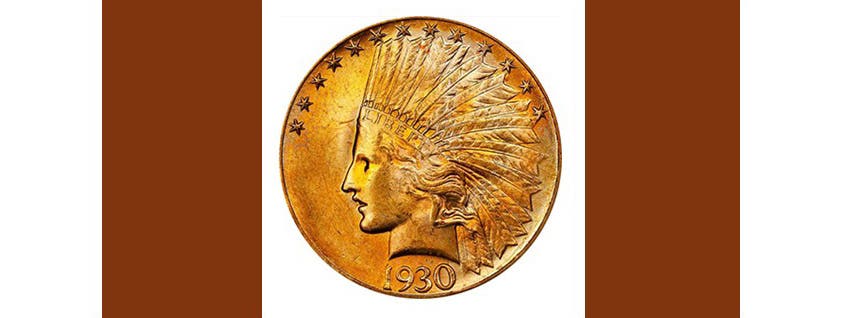The idea of collecting silver 1-ounce bullion coins is no longer a new one since there have been several national mints producing them now for decades. It doesn’t take much more than patience, perseverance, and some cold, hard cash to get our hands on a date run of United States silver Eagles, Canadian silver Maple Leaves, or the silver, 1-ounce pieces of several different countries. Now we can even go bigger, to something like the 5-ounce United States silver quarters of the America the Beautiful themes, if we are interested in assembling a hefty collection of U.S. silver. But what if we want to go even bigger than that?
It’s probably beyond most of our mainstreams to go seeking out 1-kilogram silver coins, but in the past few years, a collection like this has become a possibility. The collection will be quite international and will include at least these:
Australia Kookaburra, Koalas and Lunar Series
In the past few decades, the Land Down Under has produced an impressive array of commemorative coins as well as bullion coin offerings. There is a rather wide array of 1-ounce silver bullion pieces that anyone with some patience might assemble into several sharp-looking sets. But there are also these three types of 1-kilo coins, each made of silver, all with intriguing designs. The Australian Kookaburra is the oldest of the trio, but all three of these series have enough years under their belts that a person can think in terms of a set. As well, the designs on the side opposite the monarch tend to change from year to year.
Now curiously, it’s a worthwhile question to consider just how much any 1-kilo silver coin is going to cost. After all, silver is not the most expensive of the precious metals, but the word “precious” is used for a reason when we describe it. As we write this, silver has been floating about at roughly $24 per troy ounce. There are 32.1507 troy ounces in a kilogram. That means that we will have $771.62 of silver in each of these 1-kilogram coins. As we might expect, this, in turn, means that we’ll have to pay somewhat more than this to land one since we are not just buying a bullion ingot. Overall, these are not ever going to be cheap pieces to add to a collection – but they are always going to look and feel impressively large.
Somalian Elephant
If the various Australia series are not enough of a challenge for us, something like the Somalian Elephant may be more to our taste. Interestingly, this silver bullion coin has a pretty established history, reaching back to 2004, although the 1-kilogram version is somewhat newer. It’s a fair bet that most of us don’t immediately think of Somalia when we think of commemorative or bullion coins, but the government of this rather struggling country has managed to produce some attractive coins over the course of years. As with the large Australian pieces, there is now a set of Somali wildlife coins that may seem as large as an elephant when compared to the more normal numismatic items in a person’s collection.
Armenian Noah’s Ark
Somalia might seem like an unlikely choice for 1-kilo silver coins, but most of us can find it on a map of the world. Armenia is a bit tougher in that regard since it is one of the smaller countries that emerged from the break-up of the old Soviet Union. Yet this nation, too, produces 1-kilo silver coins, called the Noah’s Ark coins, since Mt. Ararat is located in Armenia. For those of us who slept through Sunday school as kids, this is the fabled mountain upon which Noah, his family, and all the animals came to rest after the Great Flood. The coin’s design features not only the Ark but also the dove that came back to Noah, carrying an olive branch in its beak as proof that the flood had ended.
Unlike the other 1-kilo pieces we have mentioned, the Noah’s Ark pieces keep the same design from year to year. But intriguingly, they do qualify as bilingual coins since the legends on each are in both English and the Armenian alphabet. One of these can certainly make for an attractive addition to a collection.
Tokelau
Finding Armenia on a world map may seem like child’s play when we compare it to Tokelau, one of the many island nations and dependencies that on any world map look like specks in the Pacific Ocean. This is a series of atolls located roughly halfway between New Zealand and Hawaii and has one of the smallest populations and economies of a political entity in the world. Despite its size, or perhaps because of it, these tiny atolls produce a huge number of coins, usually in some collaboration with New Zealand. Adding a single 1-kilogram Tokelauan piece to any collection could be a way to expand that collection in an impressive way.
Great Britain’s Queen’s Beasts and the Mexican Libertad
We’ll list together two final choices for our collection of the biggest coins, largely because both are very well-known and relatively easy to find. Great Britain’s series on the Queen’s Beasts is a well-established set that collectors enjoy in any size, while the Mexican Libertad has a wonderful history to it and also can be found in a variety of sizes. Both generally make an appearance at big shows or can be purchased through different online sources.
You may also enjoy: One-of-A-Kind Coin Surpasses $1.2 Million At Auction
How Far Beyond the Mainstream?
With the sterling, globe-spanning list we’ve put together, even purchasing just one piece from each nation gives us 8 kilos of silver, which equals 17.6 lb. Whether this is beyond our own personal mainstream or not is always a fun debate, but there is no argument that this is a hefty collection!








